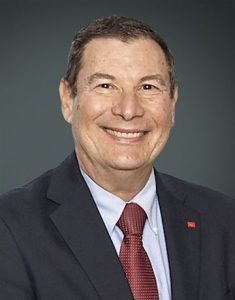Two Supreme Court Decisions came down April 24, 2018 with potentially significant impacts on patent practice. First, in Oil States v. Greene’s Energy, the Court rejected Oil States’ Article III and 7th Amendment challenges to inter partes review (IPR) proceedings, declaring the proceedings constitutional under the public rights doctrine. Second, the Court ruled that Patent Trial and Appeal Board (PTAB) Final Written Decisions must address the patentability of all challenged claims if an IPR is instituted in SAS Institute v. Iancu, eliminating partial institutions.
Oil States Energy Services v. Greene’s Energy Group
After Oil States Energy Services sued Greene’s Energy Group for infringement in federal district court, Greene’s Energy challenged the patent at the PTAB, successfully arguing the patent was invalid. Oil States then appealed the decision to the Federal Circuit, challenging both the decision and the constitutionality of IPR proceedings at the PTAB as a whole. Oil States argued that patents were a private right and that actions revoking a patent must be limited to Article III courts before a jury, and alternatively that the Seventh Amendment requires a jury trial as patent validity was traditionally decided by a jury. Attempting to distinguish IPR proceedings from re-examination proceedings, which have previously been ruled constitutional, Oil States pointed out how the adversarial process of IPR proceedings mimicked the procedure of Article III courts, while re-examination mimicked the prosecution process at the PTO.
The Court’s 7-2 decision to uphold rested primarily on the finding that because patent rights are public rights, reconsideration of those rights need not be reviewed in an Article III court. Public rights are those “arising between the government and others, which from their nature do not require judicial determination and yet are susceptible of it.”[1] The Court then explained that to whatever extent patent rights are granted to a patent holder, they are statutory rights which cannot exceed the scope allowed by statute. The Court reasons that since the AIA is a statutory limitation of the patent rights, any rights granted to the patent owner are granted subject to continual review by the PTO and possible revocation.[2] Based on this construction reserving review for the PTAB, the Court resolved the Seventh Amendment challenge as moot, since it only applies when Congress has not properly assigned a matter to adjudication outside of an Article III tribunal.
Justice Gorsuch, joined by Justice Roberts, dissented from the opinion, specifically objecting to the conflation of the constitutional power of the executive to issue patents with the power to also revoke patents. He concludes his detailed history of the difference between those powers with an appeal to Article III’s purpose, explaining that “enforcing Article III isn’t about protecting judicial authority for its own sake. It’s about ensuring the people today and tomorrow enjoy no fewer rights against governmental intrusion than those who came before. And the loss of the right to an independent judge is never a small thing.”[3]
Despite these concerns, the Oil States decision has assured that any patent rights enjoyed today and tomorrow will be subject to review at the PTAB.
SAS Institute v. Iancu
SAS Institute challenged all 16 claims in ComplementSofts’s software patent in an inter partes review proceeding before the Patent Trial and Appeal Board (PTAB). The PTAB instituted review on only some of the claims (claims 1 and 3-10). The PTAB found claims 1, 3, and 5-10 invalid in the Final Written Decision, only upholding the validity of claim 4. SAS appealed this decision to the Federal Circuit, objecting to the PTAB’s failure to address all 16 challenged claims. The Federal Circuit upheld the PTAB in a 2-1 decision, which the Supreme Court has now reversed 5-4.
The majority relies on the plain language of the statute, the America Invents Act (AIA), in its ruling that the PTAB must address all challenged claims once it institutes an IPR. Justice Gorsuch, the author of the majority opinion, declared, “The statute, we find, supplies a clear answer: the Patent Office must ‘issue a final written decision with respect to the patentability of any patent claim challenged by the petitioner.’ In this context, as in so many others, ‘any’ means ‘every.’”[4]
This holding will impact the PTAB’s procedures, taking away their discretion to partially deny institution on individual challenged claims where they do not find a ‘reasonable likelihood of success”. Justice Ginsburg emphasizes efficiency as a concern in her dissenting opinion, rhetorically asking “Why should the statute be read to preclude the Board’s more rational way to weed out insubstantial challenges?. . . the Court’s opinion offers no persuasive answer to that question, and no cause to believe Congress wanted the board to spend its time so uselessly.”[5]
The removal of the PTAB’s current institution practice puts Director Iancu’s plan for issuing updated procedural guidance to the PTAB in the spotlight moving forward, and emphasizes the importance of the multiple patent reform bills currently being debated in Congress as potential solutions.
Meanwhile, the Court has remanded this case to be decided in accordance with their statutory interpretation, and the outcome will bear watching as it continues.
[1] Ex parte Bakelite Corp., 279 U. S. 438, 451 (1929).
[2] Oil States Energy Services v. Greenes Energy Group, Slip Op. at 10-11. (April 24, 2018).
[3] Oil States Energy Services v. Greenes Energy Group, Slip Op. at 12. (April 24, 2018) (Justice Gorsuch, dissenting).
[4] SAS Institute v. Iancu, Director, United States Patent and Trademark Office, Slip Op. at 1 (April 24, 2018).
[5] SAS Institute v. Iancu, Director, United States Patent and Trademark Office, Slip Op. at 1 (April 24, 2018). (Justice Ginsburg, dissenting)

